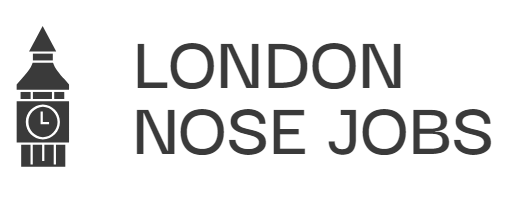Key Takeaways
- Nose fillers offer a non-surgical way to enhance the shape of your nose, but results are temporary.
- Rhinoplasty is a surgical option that provides permanent changes to the nose’s structure.
- Consider your budget: nose fillers are generally less expensive upfront, but costs can add up over time with repeated treatments.
- Recovery time for nose fillers is minimal, while rhinoplasty requires a longer healing period.
- Your choice should align with your personal goals and the extent of changes you’re looking for.
Understanding Nose Fillers

What Are Nose Fillers?
Nose fillers, also known as non-surgical rhinoplasty or liquid nose jobs, are a cosmetic procedure involving the injection of dermal fillers to reshape the nose. This offers a non-invasive alternative to traditional rhinoplasty. Typically, these fillers contain hyaluronic acid (HA), a substance also used in lip and cheek enhancements. The procedure is designed to temporarily correct minor imperfections, such as bumps, asymmetry, or a drooping nasal tip. It’s a quick way to achieve noticeable changes without the commitment of surgery.Benefits of Nose Fillers
Choosing nose fillers comes with several advantages:- Minimal Downtime: Recovery is quick, with most people returning to their daily activities almost immediately.
- Non-Surgical: Avoids the risks and recovery associated with surgery.
- Immediate Results: Changes are visible right after the procedure.
- Reversible: Hyaluronic acid fillers can be dissolved if you’re not happy with the outcome.
Nose fillers can smooth out bumps, improve symmetry, and even lift the tip of your nose. It’s a subtle way to enhance your appearance without drastic changes.
Potential Risks and Complications
Like any cosmetic procedure, nose fillers carry potential risks. While generally safe, it’s important to be aware of possible complications:- Bruising and Swelling: These are common but usually subside within a few days.
- Infection: Although rare, infection is a risk with any injection.
- Vascular Occlusion: This serious complication occurs if filler is injected into an artery, potentially leading to tissue damage. It’s rare but requires immediate attention.
- Asymmetry: Achieving perfect symmetry can be challenging, and minor irregularities may occur.
Exploring Rhinoplasty
Rhinoplasty, often called a ‘nose job’, is a surgical procedure designed to reshape the nose. It’s a more involved process than nose fillers, but it can offer more significant and permanent changes. If you’re considering a more dramatic alteration to your nose’s appearance, rhinoplasty might be the route to explore. Let’s break down what it involves.What Is Rhinoplasty?
Rhinoplasty is a surgical nose job procedure that alters the bone and cartilage of your nose to improve its shape, size, or angle. It can address a variety of concerns, from correcting breathing problems to enhancing facial symmetry. The procedure is tailored to each individual’s unique anatomy and desired outcome. It’s important to have realistic expectations and a clear understanding of what rhinoplasty can achieve.Benefits of Rhinoplasty
Rhinoplasty offers a range of potential benefits, both functional and aesthetic:- Improved nasal symmetry and balance with other facial features.
- Correction of breathing difficulties caused by structural issues in the nose.
- Reshaping of the nasal tip, bridge, or nostrils.
- Long-lasting or permanent results, unlike temporary solutions like fillers.
Rhinoplasty can significantly improve a person’s self-confidence and quality of life. It’s not just about changing the appearance of the nose; it’s about achieving facial harmony and addressing functional concerns that may be impacting daily life.
Risks and Recovery Time
Like any surgical procedure, rhinoplasty carries potential risks, including infection, bleeding, and adverse reactions to anaesthesia. There’s also a risk of unsatisfactory aesthetic results or breathing problems. Recovery time can vary, but typically involves several weeks of swelling and bruising. A splint is usually worn for the first week, and strenuous activities should be avoided for several weeks after that. It’s important to follow your surgeon’s instructions carefully to ensure proper healing and minimise complications.Comparing Procedures
Nose Filler vs Rhinoplasty: Key Differences
Okay, so you’re trying to figure out the real differences between nose fillers and rhinoplasty? In short:- Nose filler are non-surgical. They involve injecting fillers to reshape the nose.
- Rhinoplasty is a surgical procedure that can reshape bone and cartilage.
| Feature | Nose Fillers | Rhinoplasty |
|---|---|---|
| Invasiveness | Non-surgical | Surgical |
| Bone/Cartilage | No alteration | Can reshape bone and cartilage |
| Downtime | Minimal | Significant |
| Result | Subtle changes | More dramatic, permanent changes |
| Suitability | Minor corrections, adding volume | Significant reshaping, functional issues |
Cost Considerations
Nose fillers are generally cheaper upfront than rhinoplasty. But, because fillers aren’t permanent, you’ll need to factor in the cost of repeat treatments. Rhinoplasty is a bigger investment initially, but it’s a one-time cost for (hopefully) permanent results. It’s worth getting a detailed quote for pricing for both options, including any follow-up appointments or potential revision costs.Longevity of Results
This is where the two procedures really differ.- Nose fillers are temporary; the results typically last from 6 months to 2 years, depending on the type of filler used and how your body metabolises it.
- Rhinoplasty, however, offers permanent results, so once you’ve recovered, the changes are there to stay.
Choosing between nose fillers and rhinoplasty really depends on what you’re hoping to achieve and how comfortable you are with surgery. Consider what’s most important to you – cost, permanence, or the extent of change – and that will help guide your decision.
Who Is a Suitable Candidate?

Ideal Candidates for Nose Fillers
Generally, the best candidates are those looking for subtle improvements to the shape of their nose. Think small nasal bumps, a slightly droopy tip, or maybe some asymmetry. Nose fillers are great for these minor tweaks. However, it’s not just about the aesthetics. You also need to be someone who understands the procedure’s limitations and is ready to manage any potential complications. If you wear glasses regularly, this might not be the best option, as the pressure can affect the filler. Also, realistic expectations are key. Nose fillers can’t fix breathing problems or make drastic changes.Ideal Candidates for Rhinoplasty
Rhinoplasty is often a better choice if you’re after more significant changes. This could include:- Correcting breathing difficulties
- Reshaping a severely crooked or broken nose
- Making substantial alterations to the size or shape of your nose
Consultation and Assessment
Ultimately, the best way to determine which procedure is right for you is to have a thorough consultation with a qualified and experienced practitioner. They’ll assess your nasal anatomy, discuss your goals, and help you understand the pros and cons of each option. Don’t be afraid to ask questions and express your concerns. This is your face, and you deserve to feel confident in your decision.It’s important to remember that both nose fillers and rhinoplasty are medical procedures, and it’s essential to choose a practitioner who is properly trained and qualified. This will help to minimise the risks and ensure that you achieve the best possible outcome.
Post-Procedure Expectations
What happens after the procedure is just as important as the procedure itself. Let’s break down what you can expect during the recovery period for each option.Recovery After Nose Fillers
One of the biggest perks of nose fillers is the minimal downtime. Most people can return to their normal activities almost immediately. You might experience some redness, slight swelling, or tenderness at the injection site, but these side effects usually subside within a day or two. Here’s a quick rundown:- Immediate Aftercare: Avoid touching or applying pressure to the treated area for at least six hours. This helps prevent the filler from shifting.
- Swelling and Bruising: Mild swelling and bruising are common but should resolve quickly. Applying a cold compress can help reduce these symptoms.
- Activity Restrictions: You can usually resume normal activities right away, but it’s best to avoid strenuous exercise for 24-48 hours to minimise swelling.
- Follow-up: A follow-up appointment is usually scheduled to assess the results and address any concerns.
It’s important to remember that while nose fillers offer immediate results, they are temporary. You’ll need to schedule repeat treatments to maintain the desired appearance.
Recovery After Rhinoplasty
Rhinoplasty, being a surgical procedure, involves a more extensive recovery period compared to nose fillers. Patience is key here. The initial recovery can take several weeks, and it may take months to see the final results as swelling gradually diminishes. Here’s what you can expect:- Immediate Post-Op: You’ll likely have a splint or cast on your nose for about a week to provide support and protect the area. Pain medication will be prescribed to manage discomfort.
- Swelling and Bruising: Significant swelling and bruising around the eyes and nose are common. These will gradually improve over the first few weeks.
- Activity Restrictions: Avoid strenuous activities, heavy lifting, and any activities that could potentially injure your nose for several weeks. Your surgeon will provide specific guidelines.
- Follow-up Appointments: Regular follow-up appointments are crucial to monitor your progress and ensure proper healing.
- Long-Term Healing: It can take up to a year for all the swelling to completely resolve and for the final shape of your nose to become apparent.
Managing Expectations
Regardless of whether you choose nose fillers or rhinoplasty, it’s vital to have realistic expectations. Nose fillers can provide subtle improvements and address minor imperfections, but they can’t achieve the dramatic changes possible with rhinoplasty. Rhinoplasty can create significant and lasting changes, but it involves a more involved recovery process and carries greater risks. Here’s a table to summarise the key differences in recovery:| Feature | Nose Fillers | Rhinoplasty |
|---|---|---|
| Downtime | Minimal (1-2 days) | Significant (several weeks) |
| Swelling/Bruising | Mild | Moderate to Severe |
| Splint/Cast | No | Yes (for about a week) |
| Activity | Resume normal quickly | Restrictions for several weeks |
| Final Results | Immediate | Months to a year |
Making the Right Choice
Factors to Consider
Now it’s time to really think about what you want. It’s not just about cost or recovery time; it’s about what will make you happiest in the long run. Here’s a few things to mull over:- Desired Outcome: Are you after subtle tweaks or a complete transformation? Fillers are good for minor adjustments, while rhinoplasty can handle more complex changes.
- Tolerance for Downtime: Can you afford to take time off work? Rhinoplasty requires a longer recovery than fillers.
- Budget: How much are you willing to spend? Rhinoplasty is a bigger investment than fillers.
Consulting with a Specialist
Seriously, don’t skip this step. A consultation with a qualified and experienced practitioner is essential. They can assess your nose, discuss your goals, and advise you on the best course of action. They’ll also be able to explain the potential risks and benefits of each procedure in detail. Think of it as getting a second opinion on a big decision – it’s always a good idea.Personal Goals and Aesthetic Preferences
Ultimately, the decision is yours. What do you want to achieve? Do you want to correct a bump, refine the tip, or improve your breathing? Consider your personal aesthetic preferences and how the procedure will fit in with your overall facial features.It’s easy to get caught up in trends or what other people think, but remember, this is about you and your happiness. Take the time to really consider what you want and what will make you feel most confident and comfortable in your own skin.It’s a big decision, but with the right information and guidance, you can make the right choice for you.
Conclusion
Deciding between nose fillers and rhinoplasty isn’t always straightforward—it really comes down to your personal goals and expectations. If you’re after a subtle, temporary enhancement with minimal downtime, fillers can offer a quick and effective solution. But if you’re seeking long-lasting results or need to address underlying structural issues, rhinoplasty might be the better option. Whichever path you choose, be sure to place your trust in the right hands. Look for a board-certified specialist or a highly-rated cosmetic clinic known for its expertise in facial procedures. A trusted name with a solid track record or a top-rated local aesthetic center—can make all the difference in ensuring your results are both beautiful and safe. Take your time, do the research, and consult with a qualified professional to confidently choose what’s best for you.Frequently Asked Questions
What are nose fillers?
Nose fillers are injections used to improve the shape of your nose without surgery. They are usually made of hyaluronic acid, which is a safe substance that adds volume.
What are the benefits of nose fillers?
Nose fillers can give you a new look quickly and without the need for recovery time. They are less expensive than surgery and can be done in a short appointment.
Are there any risks with nose fillers?
Yes, like any treatment, nose fillers come with some risks. You might experience swelling, bruising, or even lumps if not done correctly.
What is rhinoplasty?
Rhinoplasty, often called a nose job, is a surgical procedure to change the shape of the nose. It can make your nose smaller, larger, or fix bumps.
How long does recovery take after rhinoplasty?
Recovery from rhinoplasty can take a few weeks. You might have swelling and bruising, and it can take time for your nose to heal completely.
How do I decide between nose fillers and rhinoplasty?
Think about your goals. If you want a minor change and don’t want surgery, nose fillers might be best. For a permanent and more significant change, rhinoplasty is the way to go.




